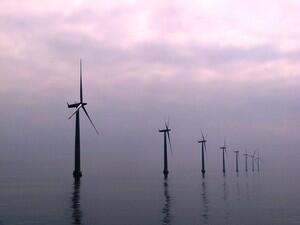Also, Denmark’s coalition government is now the exception within the EU in being left of centre.
This suggests that achievements might not match aspirations. Certainly, the video posted by the Danes on YouTube is very bland. Good intentions abound, but apart from words like “investment” there is not much indication of what will actually be done. There appears to be a disconnect from the current fiscal climate across Europe, where austerity and budget cuts are the order of the day, making it difficult to see where the new investment is to come from.
Sustainable growth, territorial cohesion and austerity measures
On the more positive side, “sustainable growth” is one of the three key aims in the EU’s Europe 2020 strategy that was constructed in 2010 as the response to the crisis that began in 2008. However, there appears to have been little reference to the EU’s “smart, sustainable and inclusive growth” agenda as the Eurozone countries lurched from crisis to crisis through the autumn. Instead, very orthodox deficit-reduction policies have been forced on Greece and Italy and promised for Spain by its new government. It is difficult to reconcile the reality and the rhetoric. Taking money out of an economy and making it harder to borrow money is not a recipe for growth – quite the reverse. The likely result will be a drop in the tax yield, a rise in spending on unemployment benefits and continuing deficits.
Territorial cohesion is now written into the Lisbon Treaty, and hence an official aim of the EU. However, the macro-economic policies being enforced across the EU (including in the UK, although it was outvoted 26-1 in December in the most recent crisis summit) pull in exactly the opposite direction. Within the Eurozone we have German goods being sold at what is in practice an under-valued price. In contrast, the weaker economies are trying to sell their goods and services internationally at an overvalued price. Not surprisingly, Germany amasses surpluses while others run up debts. If territorial cohesion is about each region using its assets to enhance its competitiveness, this makes no sense. One of the problems of the way the discourse on territorial cohesion has developed in Europe is that it has paid too little attention to prices as a factor in competitiveness.
Wind energy and regional development
So what hope is there that the Danish Presidency can make progress on its aim of green growth? The good news is that Denmark does have a track record in this area. Denmark has had a national energy policy since the 1970s. Also since 1990 the overall goal of that policy has been to develop renewable energy sources and to tackle greenhouse gas emissions. Wind power has been a particular focus, and acceptance of wind turbines there is much greater than is the case in Scotland, for example. Most of Denmark’s windmills are owned by private households based on neighbourhood co-operatives. This is because there was a “feed in tariff” from 1992 until 1999, allowing such small producers to sell power to the national grid, and other tax incentives.
There is also the demonstration project that made the island of Samsø on the east coast of Jutland famous. In 1996 the Danish Ministry of the Environment held a competition which this small municipality won. The challenge was to convert an entire community to renewable energy within ten years. This was achieved, starting from a base position in which only 5% of the energy had come from local windmills. Eleven land-based wind turbines delivered the new energy supply. Their location was carefully negotiated through the planning process to protect sites of natural and historic importance. Development of ten offshore windmills then consolidated the supply on the island and created a capacity to export energy.
Samsø was struggling with low incomes and out-migration when the project started. The energy project was seen as a positive force for regional development, and built into development plans. An Energy Academy was set up on the island in 2006. This has drawn between 5,000 and 6,000 professional visitors each year. It has become a key element in the place marketing done by the municipality. Construction of the academy also helped to develop local craft skills linked to solar energy, so that the green energy project really did create local employment and new skills that are now sold more widely.
There is no doubt that Denmark will seek to use the Presidency to showcase success stories like this. How receptive will the other 26 EU member states be? The Samsø example depended on the combination of an enabling national framework and close co-operation between the municipality and the then regional scale planning authority, along with strong participation by local civil society. It is a model familiar to members of the Innovation Circle, but less common in other parts of Europe.
Picture: A windpark near Sams. Flickr - © m.prinke

